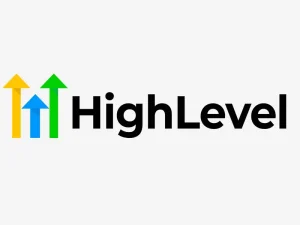Introduction to website optimization
Welcome to the ultimate guide on turbocharging your website and attracting a flood of organic traffic like a pro! Your website is your digital storefront, and just like any brick-and-mortar business, you want foot traffic – or, in this case, clicks – coming through those virtual doors. Organic traffic is the holy grail of online success, bringing visitors genuinely interested in what you offer. So buckle up as we dive into five simple yet powerful tips to elevate your website optimization game and skyrocket your organic traffic numbers!
The importance of organic traffic for a website
Organic traffic is the lifeblood of a website. It refers to visitors who find your site through search engines, not paid advertisements. Why does it matter? Well, organic traffic represents a genuine interest in what you offer. People who discover your site through relevant searches are more likely to engage with your content and convert into customers.
You have a steady flow of organic traffic signals to search engines that your website is valuable and trustworthy. This can improve your search engine rankings over time, making it easier for potential visitors to find you online.
Moreover, organic traffic tends to have higher-quality leads compared to other sources. These visitors are actively searching for information or products related to your niche – they are already interested in what you offer before even landing on your site. So, optimizing for organic traffic can significantly impact the success of your website in the long run.
Tip #1: Conduct keyword research and use long-tail keywords
Are you looking to boost your website’s visibility and increase organic traffic? One key strategy is conducting thorough keyword research. By identifying relevant keywords that your target audience is searching for, you can tailor your content to meet their needs effectively.
Long-tail keywords, in particular, are essential for capturing specific search queries and driving qualified traffic to your site. These longer, more specific phrases can help you rank higher in search engine results pages and connect with users who are closer to making a purchasing decision.
Incorporating long-tail keywords naturally into your content can enhance its relevance and increase the chances of attracting visitors who are genuinely interested in what you have to offer. So, take the time to research and integrate these valuable keywords strategically throughout your website for optimal results.
Tip #2: Create high-quality and relevant content
Creating high-quality and relevant content is key to attracting organic traffic to your website. When visitors find valuable information that answers their questions or solves their problems, they are more likely to engage with your site.
Start by understanding your target audience’s needs and interests. Tailor your content to address these specific pain points and deliver value-added solutions. Remember, quality over quantity – focus on creating fewer pieces of top-notch content rather than churning out mediocre posts.
Utilize a variety of formats such as blog articles, videos, infographics, podcasts, or case studies to cater to different preferences. Engage your audience with compelling storytelling and visually appealing elements that enhance the user experience.
Consistency is key when it comes to content creation. Develop a posting schedule and stick to it so visitors know when to expect new updates from your website. You can establish credibility and build trust over time by consistently delivering valuable content that resonates with your audience.
Remember, the goal is not just to drive traffic but also to keep visitors coming back for more. Encourage interaction through comments sections or social media platforms where users can share their thoughts and opinions on your content.
Tip #3: Optimize your website’s loading speed
Is your website loading at a snail’s pace? Slow loading times can turn away potential visitors faster than you can say “click.” When it comes to optimizing your website, speed matters. Users expect websites to load quickly and smoothly, or they’ll bounce right off.
One way to improve loading speed is by optimizing images. Compressing images without compromising quality can significantly reduce load times. Minimizing the use of large image files will ensure a faster user experience.
Another factor to consider is minimizing HTTP requests. The more elements on a page that require separate server requests, the slower the load time. Simplifying your design and reducing unnecessary plugins can streamline this process.
Additionally, leveraging browser caching can make returning visits quicker for users. By storing frequently accessed resources locally on visitors’ devices, you cut down on load times and provide a more seamless browsing experience.
Don’t let slow loading speeds hinder your website’s performance. Please take the necessary steps to optimize your site’s speed and keep visitors engaged from the moment they land on your page.
Tip #4: Utilize backlinks and internal linking strategies
Backlinks and internal linking are the secrets to boosting your website’s SEO game. Backlinks act as endorsements from other websites, showing search engines that your content is valuable and trustworthy. It’s like getting a thumbs-up from the internet community! When you have quality backlinks pointing to your site, it can significantly improve your organic traffic.
On the other hand, internal linking helps improve user experience by guiding visitors to relevant content within your site. By strategically linking related articles or pages together, you keep users engaged and help search engines navigate and index your website more effectively.
Remember, quality over quantity is key when it comes to backlinks. Focus on earning links from reputable sites in your niche rather than going for spammy link-building tactics. And remember, internal links play a crucial role in improving the overall structure of your website for both users and search engines alike.
Tip #5: Use social media to promote your website
Social media platforms are a powerful tool to increase your website’s visibility and attract organic traffic. Creating engaging posts and sharing valuable content can reach a wider audience and drive more visitors to your site.
Platforms like Facebook, Instagram, Twitter, LinkedIn, and Pinterest offer different opportunities to connect with users interested in your niche. Tailor your content to fit each platform’s unique features and audience preferences for maximum impact.
Engage with your followers by promptly responding to comments, messages, and feedback. Building relationships with your audience fosters trust and loyalty towards your brand, encouraging them to visit your website regularly for updates.
Utilize hashtags strategically to expand the reach of your posts beyond your current followers. Research trending hashtags related to your industry or topic to increase the chances of reaching new users interested in what you offer.
Encourage social sharing by incorporating share buttons on your website pages. Make it easy for visitors to share interesting content with their networks, increasing the likelihood of driving more organic traffic to your site through word-of-mouth recommendations on social media channels.
Conclusion: Continuously monitor and adapt your optimization strategies
Remember, website optimization is an ongoing process that requires dedication and effort. By implementing the tips mentioned above, you can attract more organic traffic to your site and improve your online visibility. Continuously monitor your website’s performance, analyze data, and adapt your optimization strategies to stay ahead of the competition. With a proactive approach to SEO and content marketing, you can effectively drive organic traffic to your website for long-term success. Start optimizing today and watch your website thrive!






